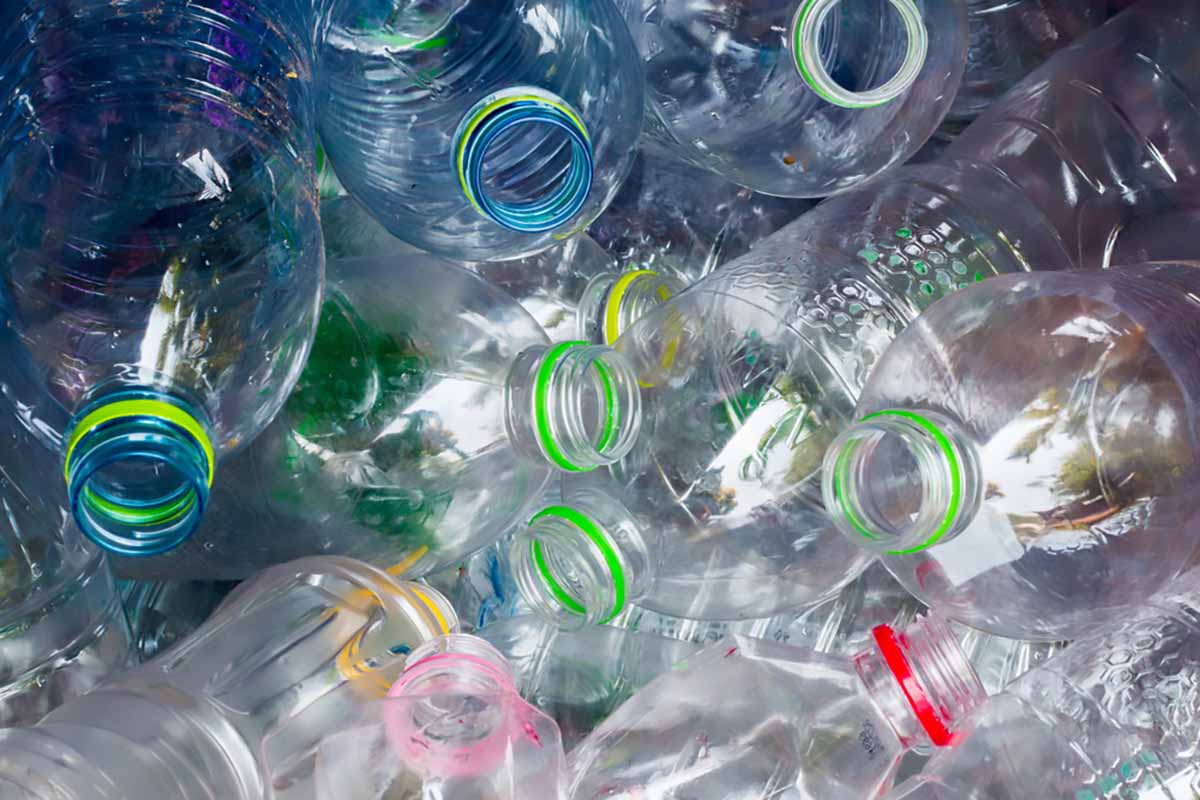
Data shows that the U.S. PET bottle recycling rate in 2019 was 27.9%, down from 29.0% in 2018. | TeuNg-StyLe / Shutterstock
Slightly less scrap plastic from the U.S. was recycled in 2019 than the year prior. The data comes as brand owners signal greater demand for recycled resins.
Nearly 5.1 billion pounds of post-consumer bottles, non-bottle rigid plastics, film and other plastics were recovered for recycling in 2019, according to a report released by the American Chemistry Council (ACC) and the Foundation for Plastic Recycling, which is part of the Association of Plastic Recyclers (APR). That number was down by 27 million pounds, or about 0.5%, from 2018.
In terms of specific categories of bottles, the weight of PET bottles recovered fell 2.2% from the prior year, and the weight of recovered HDPE bottles declined by 0.8%, the report showed.
“Flat or declining recycling rates are a sign that the system needs support,” Steve Alexander, APR’s president and CEO, stated in a press release. “Declines in mature recycling streams, such as PET and HDPE bottles, make brand company commitments to increased recycled content even more challenging. There are many opportunities to support continued growth in film and non-bottle rigid recycling as well as turn the course for bottles by focusing on what recyclers need to succeed as they are the engines of the circular economy.”
The data was based on surveys from Stina Inc. (formerly More Recycling) and the National Association for PET Container Resources (NAPCOR). This was the first year the different categories were reported in one document. In the past, the non-bottle rigids report was separate from the bottles report.
(APR owns Resource Recycling, Inc., publisher of Plastics Recycling Update.)
Details on bottle recycling
Overall, the U.S. plastic bottle recycling rate came in at 28.4% in 2019, down 0.5 percentage points from 2018, according to the report. The percentage rate drop was because more resin was sold to make bottles but less weight was collected for recycling.
As has been the case for a number of years, the vast majority of bottles collected for recycling are processed domestically. In 2019, 94.7% of bottle scrap was purchased by U.S. and Canadian reclaimers, the research showed.
Almost all of the bottles are made of PET or HDPE. The following are recycling rate details broken out by types of bottles:
The PET bottle recycling rate in 2019 was 27.9%, down from 29.0% in 2018. This drop was because more resin was sold in 2019 and less was recovered for recycling.
The recycling rate for natural HDPE bottles was 27.2%, down from 28.7% the year prior. Resin sales decreased, but the weight recovered decreased even more.
The rate for color HDPE bottles was 34.2%, up from 31.7% in 2018. Resin sales decreased while the weight recovered increased.
Lastly, the recycling rate for polypropylene bottles was 15.9%, down from 17.0% the year before. The weight of bottles produced increased while the weight recovered dropped in 2019. The report noted that relatively few PP bottles are sorted into separate PP bottle bales, and most are sold in mixed-rigid bales or color HDPE bottle bales for recycling.
Non-bottle rigids takeaways
The report didn’t provide an estimate of the overall recycling rate for non-bottle rigid plastics; however, the analysis showed that the total weight of scrap purchased for recycling increased by 3.7% in 2019.
As has been the trend for several years, a larger percentage of weight was purchased by U.S. and Canadian reclaimers and less was exported. Specifically, U.S. and Canadian reclaimers acquired 86.6% of the scrap sold for recycling in 2019, up from 86% the year before.
About three-quarters of non-bottle rigid weight purchased for recycling is HDPE and PP, with smaller percentages of PET, polystyrene, PVC and other resins.
Film insights
As with non-bottle rigids, the estimated total recycling rate for films wasn’t provided; however, the report provided details on weights sold for recycling.
In 2019, 977.7 million pounds were recovered for recycling in the U.S., down 2.4% from the year before.
The report noted that the shift toward domestic recycling, which has been seen for several years, continued in 2019. The percentage exported has been dropping since 2016.
U.S. and Canadian reclaimers bought 71.5% of the film that was recovered in 2019, and exported material only accounted for the remaining 28.5%. Just three years earlier, before China’s National Sword campaign upended export markets, the split was 46.7% domestic and 53.3% exported.
Other plastics reported for first time
The latest report also estimated the total amount of other plastics collected for recycling. Because it was the first time Stina Inc. has examined the category for this report, a year-over-year comparison isn’t available.
The document showed that 17.4 million pounds of “other plastics” were recovered for recycling in 2019. Most of this – 95% – was exported for recycling, and only 5% went to U.S. and Canadian reclaimers.
The category includes flexible intermediate bulk containers (such as super sacks, totes, etc.), agricultural drip tape, twine and netting, and other non-film flexible plastics. Stina Inc.’s reporting in the category excludes foams and carpet.
Stina Inc. also cautioned that the numbers are likely undercounts because of limited survey responses for the category.
More stories about plastics
- California’s 2024 carpet recycling rate exceeds annual goal
- Northeast commodity prices continued falling in Q2
- Greif streamlines operations through asset sales



